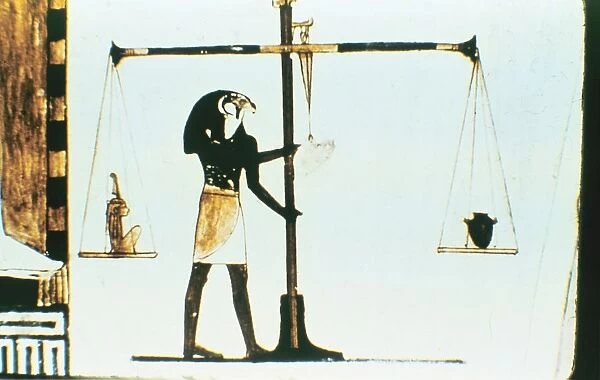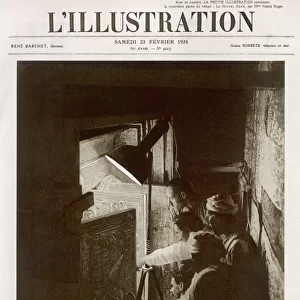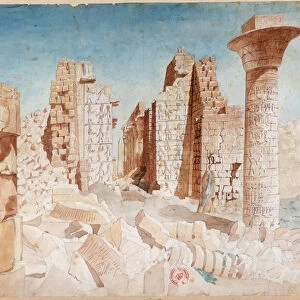Rights Managed > Universal Images Group (UIG) > History
Falcon-headed god Horus weighing the heart of the dead in a balance. Tomb of Menna, 28th Dynasty
Filename: 917_05_0390002232.jpg
Size: 6000 x 3803 (6.2MB)
Date: 28th March 2014
Source: Universal Images Group (UIG)
© Universal History Archive/Universal Images Group
![]()

Wall Art and Photo Gifts from Universal Images Group (UIG)
Falcon-headed god Horus weighing the heart of the dead in a balance. Tomb of Menna, 28th Dynasty
Falcon-headed god Horus weighing the heart of the dead in a balance. Tomb of Menna, 28th Dynasty. Tombs of the Nobles, west bank at Luxor, Thebes
Universal Images Group (UIG) manages distribution for many leading specialist agencies worldwide
Media ID 9779811
© Universal History Archive/Universal Images Group
Balance Bank Dead Dynasty Egypt Falcon Headed Funerary Heart Horus Luxor Measurement Nobles Practices Scales Thebes Tomb Tombs Weighing Weight West 28th Menna
EDITORS COMMENTS
This print from the Universal Images Group (UIG) takes us back to ancient Egypt, specifically to the Tomb of Menna during the 28th Dynasty. In this mesmerizing scene, we witness a significant moment in Egyptian funerary practices as the falcon-headed god Horus weighs the heart of the deceased in a balance. The image showcases an intricate and symbolic ritual that was believed to determine one's fate in the afterlife. The scales, carefully held by Horus himself, represent a measurement of judgment where one's heart is weighed against Ma'at, the goddess of truth and justice. If their heart proved lighter than her feather, it meant they had lived a righteous life and would be granted eternal bliss. However, if their heart was heavy with sin or guilt, it would be devoured by Ammit - part lioness, hippopotamus, and crocodile - resulting in eternal damnation. Located on Luxor's west bank at Thebes - once known as Waset - these tombs were reserved for nobles who played vital roles in society during that era. This particular tomb offers us an invaluable glimpse into ancient Egyptian beliefs surrounding death and what awaited them beyond. As we gaze upon this remarkable photograph print capturing such profound symbolism and religious significance within its frame, we are reminded of how deeply ingrained spirituality was within every aspect of ancient Egyptian culture.
MADE IN THE USA
Safe Shipping with 30 Day Money Back Guarantee
FREE PERSONALISATION*
We are proud to offer a range of customisation features including Personalised Captions, Color Filters and Picture Zoom Tools
SECURE PAYMENTS
We happily accept a wide range of payment options so you can pay for the things you need in the way that is most convenient for you
* Options may vary by product and licensing agreement. Zoomed Pictures can be adjusted in the Cart.




